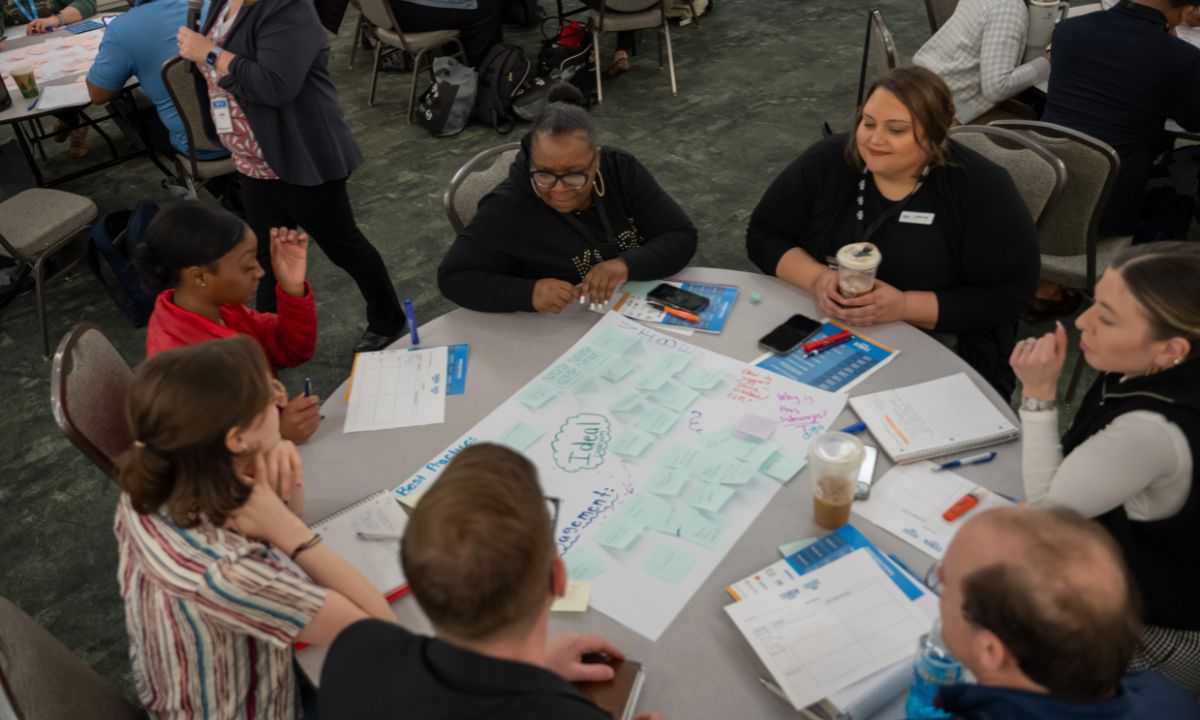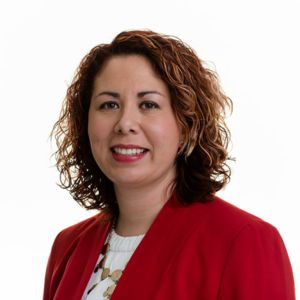What Will Make Teachers Stay? Ask Them — and Listen to What They Have to Say
Marshall: Indianapolis pilot program found empowering educators to make changes in their schools can boost retention

Get stories like this delivered straight to your inbox. Sign up for The 74 Newsletter
In the last few years, with teacher burnout reportedly high and morale low, much thought has been given to why so many educators feel unhappy or overtaxed — and how to address the problem.
Teachers are the largest in-school factor in student success, and higher turnover is linked to lower test scores. Given this, districts and schools should do all they can to ensure that their educators feel empowered, supported and fulfilled in their jobs so they can drive the best outcomes for students.
One of the best ways to make teachers feel more satisfied may be quite simple: Ask them what they think needs to change about their work, and partner with them to implement solutions.
That’s what Teach Indy, a nonprofit seeking to elevate the teaching profession in Indianapolis and beyond, sought to do by launching its Reimagining the Teacher Role Cohort (RTR Cohort) a year ago. This program brings together educators from across the city to collaborate with school administrators and experts in problem-solving to develop ways to improve the workplace so more educators stay in the classroom.
The cohort was born of a desire to put teachers in charge of solving the challenge of educator retention. Rather than imposing top-down solutions, the program empowers educators — who best know the highs and lows of the profession — to come up with ideas for change and implement them.
To start, Teach Indy partnered with an Indianapolis school district to pilot the program, and that district selected four schools to participate. Leaders at those schools were asked to identify classroom teachers who showed a desire to take on additional leadership responsibility. The 14 participating teachers — working together in teams of three or four from each school— met monthly with the outside experts to identify challenges in the teaching profession and brainstorm solutions. At the end of the program, the teachers put their ideas into practice at their schools with support from their administrators.
One team created a teacher community called the Grow Gang Club that meets monthly to participate in team-building activities, complete professional development and foster personal relationships among educators, with the goal of strengthening their school’s culture of collaboration. The group also encourages shared learning through peer-to-peer mentorship and a podcast discussion group. They will measure success based on teachers’ participation, their satisfaction with professional development and engagement in shared projects.
Another group aimed to support teacher morale and mental health by offering twice-monthly sessions that incorporate team-building and learning about topics such as student mental health. This group also assigned teachers to work on interdepartmental teams for a semester to encourage more idea-sharing on instructional practices, and it improved communication among teachers by launching a weekly print newsletter. To improve school culture and reinforce connections to students, the group created incentives for teachers to attend extracurricular activities and events.
Two teams established mechanisms in their schools to help teachers reset and manage emotional stress. They created dedicated spaces that are designed to be relaxing, and if teachers need to visit the rooms to take a mental health break, there is a system to provide classroom coverage. The spaces also offer video recordings of lessons on strategies to cope with stress, with the goal of imparting coping strategies and decreasing use of the rooms over time.
Anecdotal feedback suggests these innovations have made a difference in the schools. But putting these ideas into practice does not seem to be the most powerful part of the experience.
What we learned is that the solutions themselves are not the most powerful aspect of this experience. Rather, what makes the biggest difference is the sheer act of giving teachers the opportunity, freedom and authority to lead outside the classroom.
When we surveyed participants, 100% of respondents reported that the experience strengthened their professional skills, 86% said they’re more likely to stay in the profession in the near term because of the cohort and 71% said they’re more likely to stay over the long term because of it.
Why? By collaborating with colleagues, developing new skills and being entrusted with developing ideas, teachers gained confidence.
“I have really appreciated the opportunity to use my ‘teacher brain’ in a different capacity, which has led me to see how I can problem solve in a bigger way,” one participant said in survey feedback.
“It helped build up my faith in myself and to know that I have the support to do things (beyond the classroom),” another reported.
These insights provide school and district leaders with ways to approach changing school conditions to keep talent in the field. By empowering teachers to be leaders in their schools and beyond, schools help develop their leadership skills and provide them with a sense of purpose in making the profession better.
Just as important, giving teachers opportunities to work with — and learn from — their peers helps them form a much-needed sense of community. And encouraging teachers to build relationships with fellow teaching professionals makes the field more attractive, because adult relationships are critically important.
Teachers are the engine that drives education forward. A key step to elevating their satisfaction and retention is asking for their input, as well as giving them the opportunity to drive change in their profession. The RTR Cohort offers one model for doing this. Scaling up these kinds of efforts can ensure they feel heard and respected as the community leaders they are.
Get stories like these delivered straight to your inbox. Sign up for The 74 Newsletter

;)
